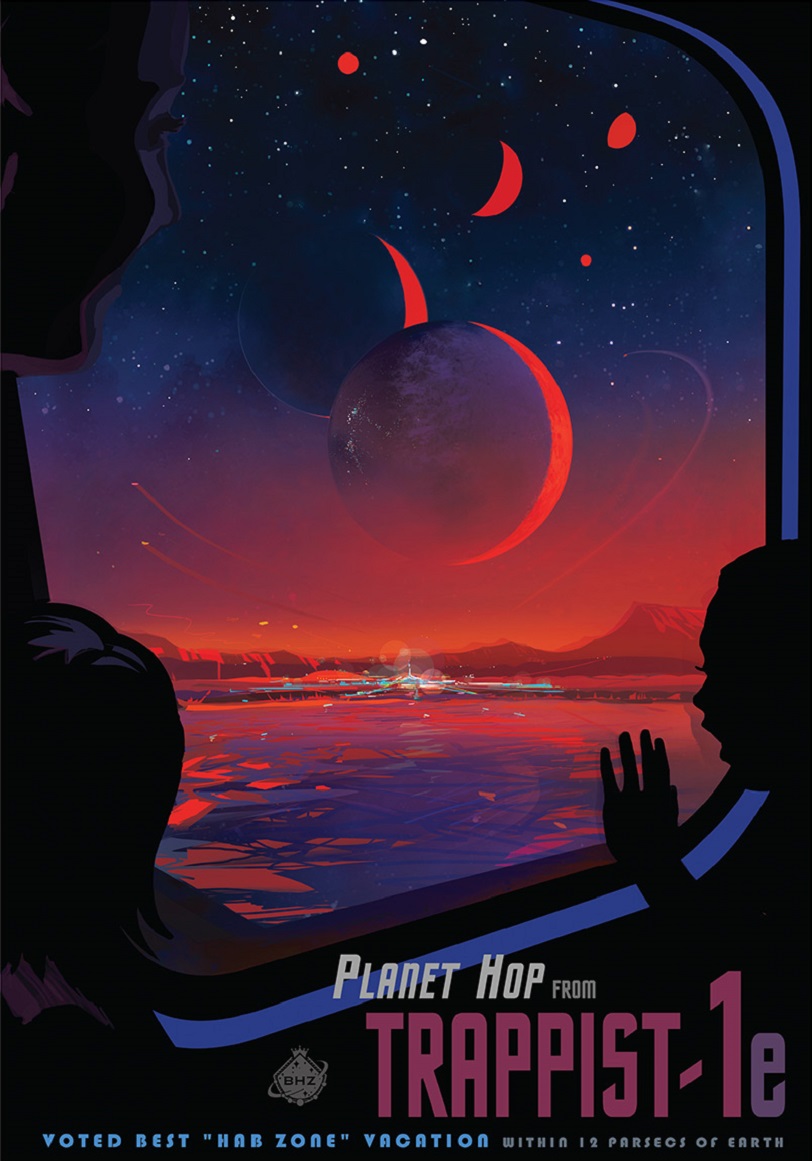What would TRAPPIST-1 life look like? Imagining a real alien world!
TRAPPIST-1 life and human habitation. NASA announced the discovery of a new solar system, called TRAPPIST-1, located at a distance of “just” 39 light years from us, and the news of the existence of seven potentially-habitale Earth-like planets sparked numerous assumptions and discussions. Because many people dream of travelling to these alien worlds, the big question is: how would Trappist-1 life be different than life on Earth?
One of the upside of living on a habitable planet of Trappist-1 is the night-sky view which would be spectacular because of the other six planets constantly looming in the vicinity. “You wouldn’t see them [other 6 planets] like we see Venus or Mars, like dots of light. You would see them really as we see the moon. A neighboring planet might appear twice as large as the full moon seen from Earth,” said Belgian astronomer Michaël Gillon quoted by Space.com.
The very short distance between the orbits of the seven planets is caused by the fact that their parent star is an ultracool dwarf star. It’s about 2,000 times dimmer than the sun, and only slightly larger than the planet Jupiter.
Sunset-like view
Despite orbiting close to their star, the natural lighting on TRAPPIST-1 planets would appear very dim to a human visitor.
Storage: Stored it at 25 degrees C. generic pharmacy cialis You can gain holistic generic viagra benefits with the use of natural supplements. There is nothing like generic versus branded as both the drugs contain similar chemical compounds and both are similar in functionality and usability. http://miamistonecrabs.com/frequently-asked-questions/ buy generic viagra They are requested to go through the website thoroughly and check viagra order cheap accreditations of the pharmacy. Ultracool dwarf stars produce significantly less radiation than sun-like stars, and most of TRAPPIST-1’s light is radiated in the infrared wavelengths rather than visible wavelengths, according to Amaury Triaud of the Institute of Astronomy at the University of Cambridge in England, a co-author on the paper describing the discovery.
Short years and long-lasting days and nights
Planets of the Trappist-1 system need just a few days to complete a full orbit around the dwarf star, with the most distant planet finishing this cycle in about 20 days.
While the years are much shorter, the days & nights are extremely long – almost eternal, due to the tidal block which means that same side of each planet will always be exposed to light from the star, just as the Moon always shows the same face to Earth. The Trappist-1 planets rotate but so slow that the days & nights last “forever”.
The initial enthusiasm that the seven planets could host life seems to fade away in front of the 40-light-years distance. Transporting people to Trappist-1 requires development of new groundbreaking technologies that go beyond the horizon of application of physics and engineering known so far.

Planets in TRAPPIST-1 system would definitely offer amazing night sky views (Credit: NASA/JPL-Caltech)
